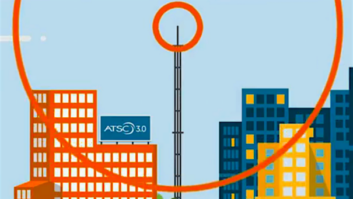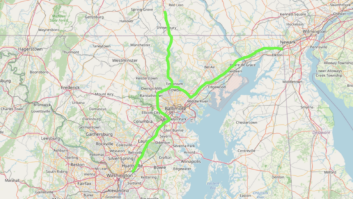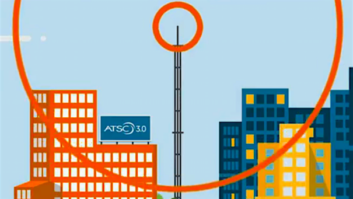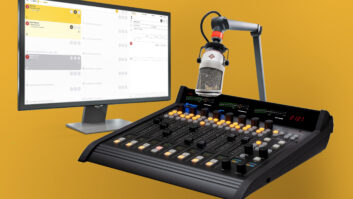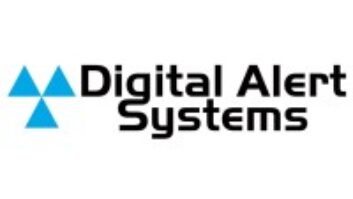 While much attention is focused on ATSC 3.0’s advanced emergency alerting capabilities like geo-targeting warnings and TV wakeup, retired Lt. Gen. Reynold Hoover illustrated precisely why the technology’s ability to disseminate information post-event may ultimately prove to be its most valuable quality in an emergency. He delivered his remarks on May 25 during the first day of the virtual 2021 AWARN Summit.
While much attention is focused on ATSC 3.0’s advanced emergency alerting capabilities like geo-targeting warnings and TV wakeup, retired Lt. Gen. Reynold Hoover illustrated precisely why the technology’s ability to disseminate information post-event may ultimately prove to be its most valuable quality in an emergency. He delivered his remarks on May 25 during the first day of the virtual 2021 AWARN Summit.
“Ladies and gentlemen, for the last 15 minutes we’ve actually been working a missile launch from North Korea,” Hoover said. “We detected a launch of a Hwasong-15, which is an ICBM. It has a max range, we estimate, of about 13,000 kilometers, which takes in the entire United States.”
“NORAD [North American Aerospace Defense Command] has assessed this launch as a threat to the United States. NorthCom [U.S. Northern Command] has launched our ground-based interceptors. We’re reporting flight as nominal. We estimate now impact in 14 minutes,” said Hoover, who among a long list of career accomplishments served as chief of staff at FEMA and integrated the agency into Homeland Security following the Sept. 11, 2001, attacks as well as being a driving force behind the adoption of IPAWS (the Integrated Public Alert & Warning System).
[Read: Rosenworcel Wants to “Revitalize” CSRIC]
Surprising Ron Prater, executive director of Big City Emergency Managers who moderated the session before the keynote, the lieutenant general said, “Ron, let me ask you, the mic’s going hot in 30 seconds. We have NORAD telling us 14 minutes to impact. What are you going to tell the public, and what do you want them to do?”
Clearly caught off guard, Prater said he is not an alert originator. “I would personally just panic, and then I would probably call Becky [Rebecca Baudendistel, director of public warning for the New York City Office of Emergency Management and a prior panelist] in New York City and ask her what to do.”
Hoover responded: “OK, Becca. Thirteen minutes to impact…. What are you going to tell people, and what do you want him to do?”
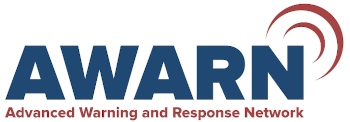 Taking a few seconds to digest the situation, Baudendistel replied: “I think, you know, the first thing is we need to do is address the problem as quickly as possible and put in a trusted source in that message to make sure they [the public] know[s] this is not just Becca saying this. This is coming from… the officials on this call.”
Taking a few seconds to digest the situation, Baudendistel replied: “I think, you know, the first thing is we need to do is address the problem as quickly as possible and put in a trusted source in that message to make sure they [the public] know[s] this is not just Becca saying this. This is coming from… the officials on this call.”
Hoover persisted in his description of the missile flight status. “Sure, sure. OK. So, NORAD now says impact is going to be on the West Coast, and impact is estimated at about 15 minutes.”
Shifting gears, Hoover recounted the Jan. 13, 2017, emergency warning issued in Hawaii that a missile strike was imminent. Public alerts explicitly stated the warning was not a drill and to seek shelter, he said.
“What do you think they [the public] did?” asked Hoover. In the 38 minutes it took the state to rescind the alert and issue a message telling people the emergency warning was false, many people panicked.
“There was chaos. People panicked in the streets. People said their last goodbyes. People, you know, went to get their kids. They were hiding in the bathrooms. They didn’t know what to do. They were searching for more answers.”
Going back to Baudendistel, Hoover resumed the description of the hypothetical missile attack. “Now NORAD advises that missile impact is imminent and most likely [will strike] Seattle, Wash. … Becca, is that going to change anything… [regarding] what you are going to tell people? Impact is imminent.”
Baudendistel replied: “I don’t think so. I’m not sure what else they can do at that point.”
Building on her observation, Hoover explained that in cases like the one in the roleplaying exercise, it is important to tell people what you want them to do, know who is going to communicate that message and how that message will be conveyed.
“And is that message going to cause more panic and harm than good?” he asked. “Certainly, we saw in Hawaii…panic, and we saw chaos. People didn’t know what to do.”
Continuing with the scenario, Hoover reported the missile struck Seattle, knocking out all communications and power in the area, collapsing bridges and highways, shutting down rail and auto traffic and causing general devastation.
“It seems to me that that is where ATSC 3.0 and that is where what we think of NextGen TV, and that is where what we think of IPAWS 2.0 … comes into play,” said Hoover.
“Because it’s post disaster in an event like that that is going to save more lives than the chaos we created [in Hawaii].”
Acknowledging the emergency management community wants to warn in advance of an event what and when it can, Hoover said in “a catastrophic, no-notice event,” it’s important to tell people exactly what to do, where to go and what steps they can take to save lives in its aftermath.
Hoover illustrated what he meant drawing on the work of Genie Chance, a journalist and radio broadcaster, during the 1964 Alaskan Earthquake.
Chance, who was running an errand with her son during the quake, drove to the public safety headquarters and using the VHF radio she had in her car began submitting reports to KENI radio.
“What does she say?” asked Hoover. “She says things like, ‘John Lawson, your family is at the Ross’s house, and they want you to know they’re safe, and they would like you to come there as soon as you can.’
“Things like, ‘The city manager is asking all department heads to report to him at the public safety building immediately.’
“Things like, ‘All engineers and pipefitters please report to the maintenance building in downtown Anchorage immediately.’”
IPAWS, ATSC 3.0 and other technologies need to be survivable “in any situation” to relay these sorts of critical messages following a catastrophe, he said.
“We are going to save more lives when we think about how we can apply ATSC 3.0 post-event than in some cases we might have saved pre-event with a warning that might cause chaos.”
“I would urge you, as you think about all of the great capabilities of NextGen TV and the broadcast capabilities that we have, we need to think how it’s going to survive post-blast or how it’s going to survive post-earthquake, … and we need to think about how that system is going to work in the future post-incident because that’s where I think… we’re going to end up saving lives,” he said.





